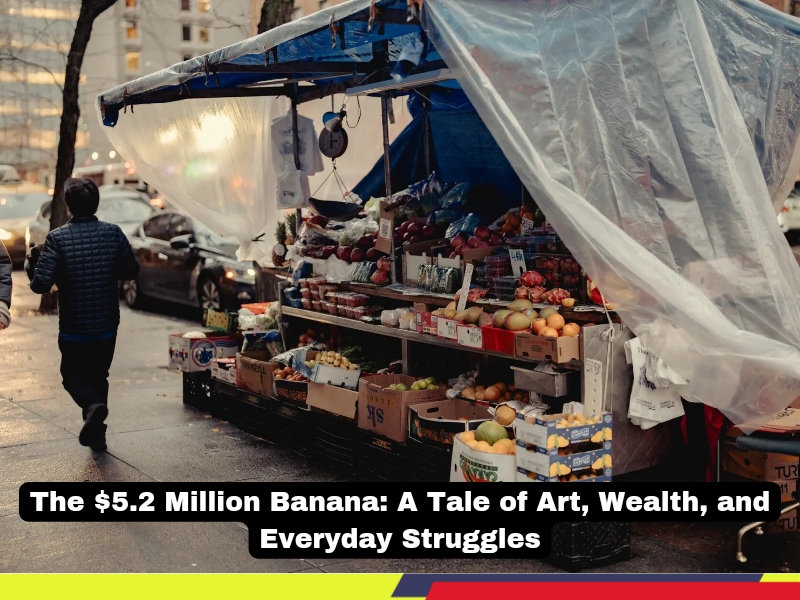On a rainy day outside Sotheby’s auction house in Manhattan, Shah Alam, a 74-year-old immigrant, was busy selling bananas for 35 cents each. Little did he know, one of those bananas would soon fetch a jaw-dropping $5.2 million at auction.
Alam, who shares a basement apartment in the Bronx and works 12-hour shifts at his fruit stand, was stunned to learn that a single piece of his modest produce had become the centerpiece of a provocative artwork by Italian artist Maurizio Cattelan. Known for his absurdist approach, Cattelan’s work involved duct-taping the banana to a wall and titling it as an art piece.
The artwork was purchased by Justin Sun, a cryptocurrency entrepreneur, for $5.2 million, with an additional $1 million in fees. When Alam heard about the sale, tears filled his eyes. “I am a poor man,” he said, visibly emotional. “I have never had this kind of money; I have never seen this kind of money.”
This surreal story juxtaposes two vastly different worlds: Alam’s daily hustle on the rain-soaked streets of New York and the extravagant world of contemporary art, where bananas and duct tape are elevated to multimillion-dollar creations.
While some might debate the meaning or value of such art, this moment underscores deeper societal contrasts—between those who view bananas as art and those who sell them to survive. For Alam, the $5.2 million sale serves as a staggering reminder of the wealth gap in a city where luxury and hardship coexist on the same streets.
Reflection
Cattelan’s banana has sparked conversations about the nature of art and value, but for Shah Alam, it’s a sobering reflection of the disparities between the elite and everyday workers. It’s a poignant reminder that behind the headlines of absurd wealth are stories of real people, striving to make a living in an ever-divided world.




